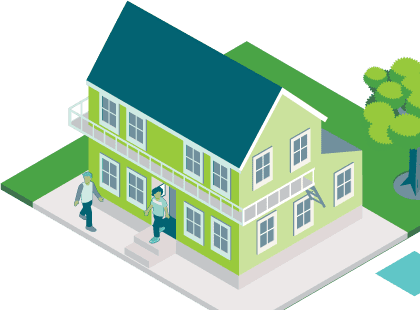All rental properties must comply with the healthy homes standards.
Responsibilities for landlords and tenants
Landlords who do not meet their obligations under the healthy homes standards are in breach of the Residential Tenancies Act 1986 – and may face consequences, like financial penalties of up to $7200.
Landlords who are not sure where to start can read our healthy homes toolkit for landlords.
Healthy homes toolkit for landlords
Tenants should know what standards need to be met for healthy homes and what to look out for.
Healthy homes compliance timeframes
All rental properties must comply with the healthy homes standards as of 1 July 2025. Landlords are responsible for ensuring their properties meet the standards.
Key compliance dates for healthy homes:
- From 1 July 2025, all private rentals must comply with the healthy homes standards.
- All houses rented by Kāinga Ora (formerly Housing New Zealand) and registered Community Housing Providers had to comply by 1 July 2024.
- Changes to the compliance timeframes took effect on 26 November 2022 for private landlords.
- All boarding houses had to comply by 1 July 2021.
- From 1 December 2020 landlords had to include a statement of their current level of compliance.
- From 1 July 2019 landlords had to sign a statement of intent to comply and keep records that demonstrate compliance with relevant healthy homes standards.
- Tenancies started or renewed between 1 July 2021 and 27 August 2022 must have complied with the healthy homes standards within 90 days.
- Tenancies started or renewed between 28 August 2022 and 2 March 2025 must comply with the healthy homes standards within 120 days.
What are the standards?
Heating
Landlords must provide one or more fixed heaters that can directly heat the main living room. The heater(s) must be acceptable types and must meet the minimum heating capacity required for your main living room.
Insulation
Ceiling and underfloor insulation has been compulsory in all rental homes since 1 July 2019. The healthy homes insulation standard builds on the current regulations and some existing insulation will need to be topped up or replaced.
Ventilation
Each livable space must have a window or door that opens to the outside and can be fixed in the open position. Kitchens and bathrooms must also have an extractor fan to remove moisture.
Moisture ingress and drainage
A rental property must have efficient drainage, guttering and downpipes for the removal of stormwater, surface water and ground water.
Where there is an enclosed sub-floor, a ground moisture barrier is required.
Moisture ingress and drainage standard
Draught stopping
Landlords must block any unreasonable gaps or holes, in walls, ceilings, windows, floors and doors, that cause noticeable draughts.
When the standards do not apply
In some situations, a property is not required to meet the healthy homes standards or parts of the standards. This is called an exemption.
Exemptions to the healthy homes standards
Your ongoing responsibility
Once your property is up to standard, you need to make sure it stays that way.
What to include in the tenancy agreement
New or renewed tenancy agreements must include a signed statement with details of the property’s current level of compliance with the standards. We have a template you can use for this.
Landlords who do not include this statement when required could face a financial penalty of up to $500 for each tenancy, or other enforcement action.
Records to keep
Landlords must keep all records and documents that show how they are complying with the healthy homes standards. These must be made available on request.
Tenants can also request information about compliance with the healthy homes standards. Landlords must provide this information to tenants within 21 days.
From 1 July 2025 all private rentals must comply with the healthy homes standards.
Last updated: 01 July 2025
